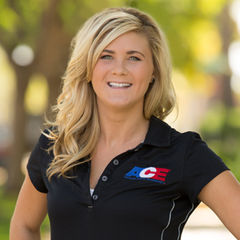In part 5 of this series, we examine the important information onPhysiology of Training. This blog summarizes the adaptations that our bodies make as we become regular exercisers. This is where you apply what you’ve learned about anatomy, physiology and kinesiology to what you’re doing with clients to get the results they want. To discern whether or not this information is going to be important, ask yourself, “How does this apply to training a client or teaching an exercise class?” If there is no practical application, it’s probably a topic where a general understanding is sufficient. If there is a direct application to an aspect of training, then it’s probably going to be a topic you want to dive into a little deeper. Let’s have a look at some of these important topics:
Acute vs. Chronic Adaptation to Exercise
The adaptations that occur immediately before, during or after exercise are acute responses, while the responses that occur gradually, but generally last as long as you maintain your exercise program, are chronic adaptations. Due to the principle of reversibility, if we stop our exercise program, these adaptations will begin to reverse, which is why it’s so important to stay active. A general awareness of what the adaptations are is sufficient. For example, an acute response to exercise is be an increase in heart rate (the higher the intensity, the more the heart rate increases until maximum heart rate is achieved). On the other hand, a decreased resting heart is a chronic adaptation, and the more fit an individual becomes, the lower his or her heart rate may become (genetics will also play a role).
Fuels Used During Exercise
As mentioned in the physiology blog when RER was first introduced, the fuel that is used will depend on the duration and intensity of the activity. The higher the intensity, the more the body relies on carbohydrates because it needs energy immediately. The lower the intensity, the more the body relies on fats because it has the time to produce energy through aerobic metabolism. Protein is used as a last resort because the body needs the protein to maintain body tissues. However, protein does play an important role in gluconeogenesis during times when the body does not have sufficient glucose stores (gluco = glucose; neo = new; genesis = creation of; this process is literally the creation of new glucose from other substances in the body). Finally, lactic acid, or lactate, is also used as fuel during gluconeogenesis. This is a great example of how the body can make use of whatever resources it has available. In this case, it takes the byproduct of anaerobic glycolysis and uses it to rebuild fuel in a new way. Tables 5-2 and 5-3 illustrates how the different energy systems contribute to activities of various durations and intensities, which is important for you to know and understand.
Thermoregulation During Exercise
There are four ways the body dissipates heat: radiation, conduction, convection and evaporation. During exercise, core temperature begins to rise so the body has to rely more on evaporation. Table 5-4 gives demonstrates how the body uses these four mechanisms at rest and during exercise.
Exercise in Various Climates
Know the recommendations for exercising in the heat and cold. This includes appropriate clothing and fluid intake, as both the heat and cold cause the body to work harder to either dissipate or build heat.
Training Principles
These are the principles that you can always count on when you’re training:
Specificity: The body is only going to adapt to the demands that are placed on it. Cardiovascular adaptations will not occur if a person is only performing resistance training (and vice versa), so it’s important that you design two specific programs (cardiovascular and resistance) that address the individual’s goals.
Overload and Progression: These are two separate principles, but they go hand-in-hand in the sense that overload does not occur without progression. Overload simply refers to the fact that you will not see additional fitness gains if you keep doing the same thing. For example, if a person performs three sets of 10 biceps curls with 25 pounds for six months, he or she will be really good at lifting 25 pounds 10 times. However, that individual will never see any additional strength gains beyond what he or she has already made unless the weight or number of repetitions are increased. Progression refers to the actual step-by-step increases that are implemented to create that overload.
Diminishing Returns: There is a point at which an individual “peaks” at his or her own level of fitness. This means that no matter how much harder a person trains, once maximum potential has been reached, he or she won’t see much more improvement. The higher level of fitness a person has, the less improvement he or she is going to see.
Reversibility: Simply put, “You don’t use it, you lose it.” Our bodies are always going to try and make their millions of functions easier, so if there is something we’re no longer using, the body is not going to waste its energy maintaining it. For example, muscle mass takes a TON of energy to maintain, so if we’re not using that muscle mass, the body is not going to expend all that energy to maintain it.
Stretching Techniques
We all know that stretching is important, but the way and when a person stretches is going to depend on his or her fitness level and whether he or she is stretching before, during or after exercise.
Static Stretching: Static means “no movement” or “stationary.” Static stretching involves holding a stretch for a length of time without movement (however, you might be able to move deeper into the stretch as the muscle lengthens). This can be done actively (with effort on the part of the client) or passively (with no effort on the part of the client). These stretches should be held from 15 to 60 seconds.
Proprioceptive Neuromuscular Facilitation (PNF): This is a technique that uses the nervous reactions (autogenic and reciprocal inhibition) to further increase range of motion (ROM). There are three primary techniques: hold-relax, contract-relax, and hold-relax with agonist contraction. Be sure to have an understanding of the slight differences between each of these techniques.
Dynamic Stretching: “Dynamic” literally means movement, so this is a method of stretching that prepares the body by mimicking the movements that will be made during the main portion of the workout. These motions should be specific to the exercises and movements that will be performed in the upcoming workout or sport (e.g., a soccer player might perform walking high kicks to prepare for the game).
Ballistic Stretching: This is a type of stretching that incorporates bouncing movements. Because of its potential for injury, ballistic stretching is typically reserved for athletes or highly fit people who will be performing movements of that nature in their sports. Be sure to understand how to safely and effectively incorporate ballistic stretching when appropriate.




 by
by 






